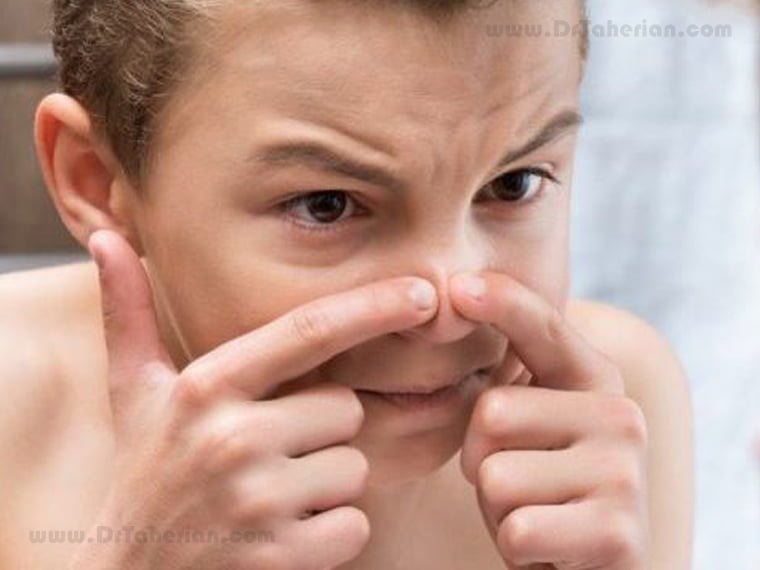Nasal bumps grow inside the nostrils and can be caused by different factors. They can be ranged from red to with, tiny to large, mildly annoying to life-threatening. Usually, the nasal bump is harmless such as nasal polyps but it is good to know how they can remove if they don’t go away on their own. Because some of them may be created by bacteria which can spread in your body and cause some problem for you.
Types of nasal bump
In this article, we mention eight types of nasal bump and their causes and symptoms.
Nasal polyps
They are soft and noncancerous bump which are common among adults, so if your child has a bump in his/her nose most probably it is not a nasal polyp. Nasal polyps can be caused by infections, sensitivity to certain drugs, asthma, and immune disorders. Usually, nasal polyps don’t make an issue but they may block the nasal passage and causes difficulty breathing. The symptoms of nasal polyps are the runny or stuffy nose, maybe pain in the face or head and loss of taste or smell. Nasal polyps can treat by medication and if it doesn’t work, surgery should be applied.
Cavernous sinus thrombosis
This medical issue occurs rarely but if it doesn’t treat, it will be life-treating. When a blood clot creates in the cavernous sinus, the spaces under each eye socket near the bottom of the brain, cavernous sinus thrombosis will occur. Usually, it may cause by spreading staph bacteria into the cavernous sinuses. Although formed cloth in the cavernous sinuses prevents infection from spreading into the body, they potentially damage to the central nervous system, brain and eyes. Cavernous sinus thrombosis symptoms are swollen bump within your nose, sharp and persistent headaches, bulging eyes and severe eye pain.
Acne

You can get acned inside or around your nostrils same as any other area of your skin such as face and chest. Pimples in the nose can cause by different factors such as bacterial infections, blocked pores or folliculitis. If your acne doesn’t not treat because of the staph infection, taking nonsteroidal anti-inflammatory drugs can be helpful to reduce swelling. Try to keep clean the affected area until acne goes away faster.
Nasal vestibulitis
Swelling of the nasal vestibule which is located inside the nostrils, called nasal vestibulitis. It may be caused by staph bacteria and its symptoms are redness, swelling, acne, and tenderness. Nasal vestibulitis is usually mild and on very rare cases the infection can spread and develop into the aforementioned cavernous sinus thrombosis. In this condition compression with a damp, warm washcloth as well as antibiotics can treat the infection.
Nasal cavity cancer
Sometimes a bump inside the nose can be a tumor or another sign of nasal cavity cancer. The symptoms of nasal cavity cancer include nasal drainage, headaches, decreased sense of smell, frequent nosebleeds, bulging of one eye or loss of vision and persistent sinus infections or congestion. You should concern that these symptoms can be a sign of another medical issue, so it is better to consult with your doctor about these problems.
Nasal abscesses
Usually, abscesses are filled with a combination of living and dead white blood cells, germs, and dead tissue. They can form anywhere in the body like nasal passages and also can cause by different things from bacteria to parasites. Nasal abscesses can be treated by antibiotics and your doctor also can drain the bump.
Nasal furuncles
It is a kind of boil, which is a hair follicle that gets infected and fills with a small amount of pus. A furuncle is caused by staph bacteria and can occur in any part of your body including your nose or your back. Although nasal furuncle doesn’t cause an important issue, it can be spread in your body and cause more serious problems because of staph bacteria.
Infected nose piercing

Sometimes piercing can cause problems such as drainage inside the nose and inflammation despite your right care. You can treat your infected nose piercing by a cotton ball, saltwater, and soap. But if it doesn’t heal you should visit your doctor to prevent any other issues.
Generally, if your nasal bump goes away within a few days, your body is cleared out the infection by its own but if take longer and causes pain or difficulty breathing, you should see a doctor. You can prevent a nasal bump by blocking bacteria to get inside your nasal cavity as well as avoid sharing personal items and keeping your hand clean especially if you want to pick your nose.




